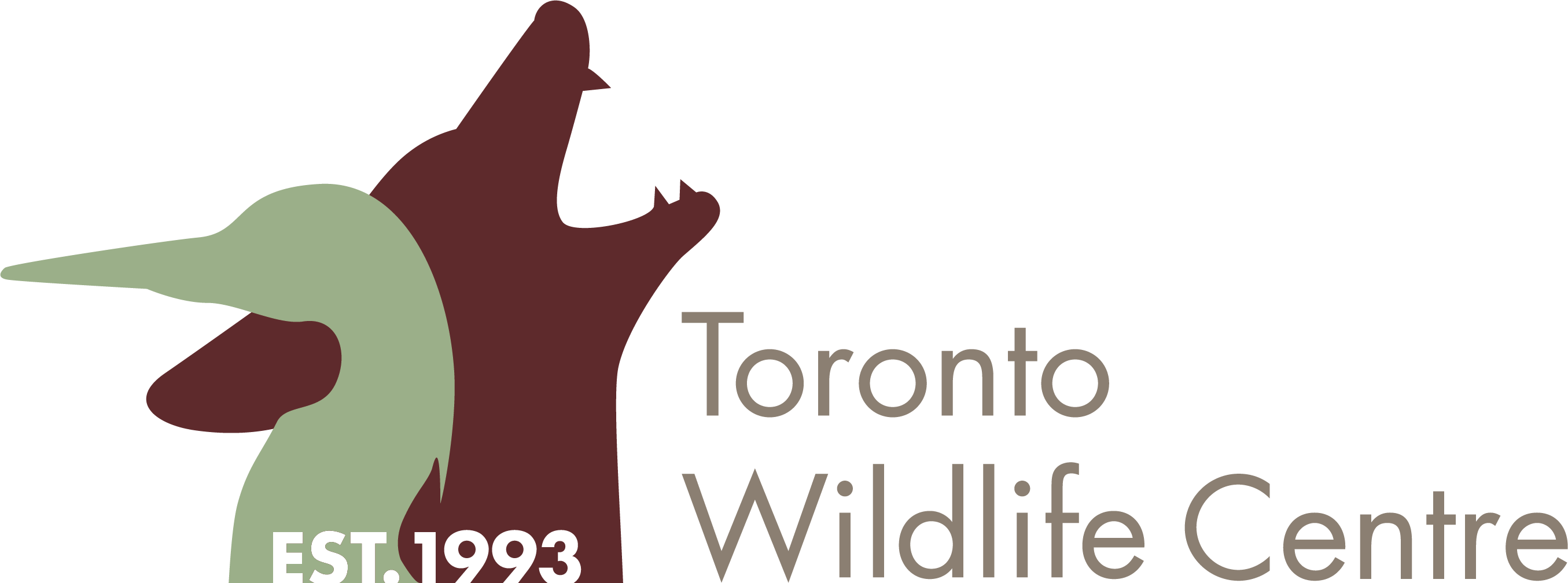Reuniting baby raccoons with their mother
Sometimes baby raccoons fall out of a nest or get separated from their mother. If the baby isn’t injured, getting them back to their mom is the best possible option. Raccoons are excellent mothers and will come back for their babies if given a chance! Raccoon moms will also take much better care of their babies than any human possibly could.
Put the baby back where they were found
Place the box with the raccoon (and a heat source) as close as possible to where the raccoon was found. If there is a tree nearby, put the box at the base of the tree. Raccoons don’t always nest in trees, so next to a house or building will work too, as long as the location is very close to where they were originally found. That’s potentially the last spot mom saw the baby and she won’t necessarily look in locations she doesn’t frequent.
Attempt reuniting for 48 hours
Reuniting should be attempted for two whole overnight periods as long as the baby continues to appear healthy. Raccoons are nocturnal, and most likely to come looking for their babies at night. It may take some time for the mother to find her baby. Sometimes mother raccoons move their babies to a new den site and this can take time as she can only move them one at a time. It is critical to keep the baby warm – refresh the heat source as needed. A mother raccoon may leave a cold baby behind.
Don’t give the baby food or water
This can be hard since our natural instinct is to provide food for a hungry baby. Besides causing other potential problems such as aspiration and digestive issues, we want the baby to be hungry. If the baby is hungry, they will cry, and their cries will attract their mother.
What if it’s a really busy area?
In high traffic areas, you can put a sign on the box to let other people know that the raccoon is waiting for their mother. Here’s one you can print off. In very busy areas, it may make more sense to bring the baby inside and keep it somewhere dark and quiet for the day. As soon as the sun starts to set and traffic dies down, put the box with the baby outside right away. No matter what, make sure to leave baby raccoons out for their mother for at least one whole overnight period, and try for two nights if the baby continues to appear healthy.
What if the baby keeps crawling out of the box?
Older baby raccoons may not stay in the box you put them in. For these babies, cover them with an upside-down laundry basket. Put a heavy brick or rock on top of the laundry basket to keep it in place. The mother raccoon will have no trouble flipping the basket over to get her baby out.
What if it’s raining?
If it’s raining lightly, cover half of the box with a piece of cardboard. If it’s raining hard, bring the baby inside and keep it dark and quiet and warm. Put them back outside as soon as the weather clears up a bit. A mother raccoon won’t be looking for her babies during a heavy rain.
What if it’s during the day?
If you found the baby during the day, put them back out for their mother right away – although raccoons are nocturnal, mothers will still look for their babies during the day. They’re good moms. In very busy high-traffic areas, it may make more sense to bring the baby inside and keep it somewhere dark and quiet. As soon as the sun starts to set and traffic dies down, get them outside right away. No matter what, make sure to leave baby raccoons out for their mother for at least one whole overnight period, and try for two nights if the baby continues to appear healthy.

